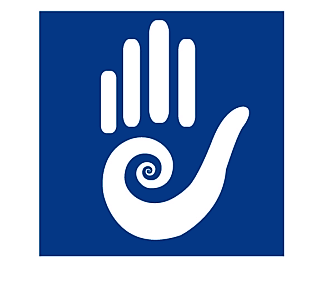RELAXATION EXERCISES - YOUR HOW TO GUIDE
RELAXATION
Meditation
It's no wonder that most of us feel stressed out. Modern lifestyles - being in heavy traffic, crowded malls, waiting in line-ups all cause a build-up of tension. This tension needs to be released.
Meditation is one way of relieving stress. Though there are many forms of meditation, it can be very simple.
Basically, you sit quietly and focus on something such as your breathing. Take a few deep, slow breaths to begin, inhaling through your nose and exhaling through your mouth. Then, just be aware of your breathing without trying to control it. Breathe through your nose.
Don't concern yourself with any thoughts that may wander into your mind - just keep focusing on your breathing. It is helpful to focus on the word in when you inhale and the word out when you exhale (or any word or phrase you want to pick).
Although a quiet and comfortable spot is preferable, you can meditate anywhere. Imagining being surrounded by mountains, trees, or watching the waves roll in at the beach can help you meditate. You either close your eyes or leave them open and focus on an object.
Take
20 minutes once or twice a day to meditate.
If this seems like too much time, start with five or ten minutes per day. If
you feel you don't have the time or patience to meditate you really need to
learn to let yourself unwind
Breathing exercises
|
Deep Breathing Exercises Deep breathing is a relaxation technique that can be self-taught. Deep breathing releases tension from the body and clear the mind, improving both physical and mental wellness. We tend to breathe shallowly or even hold our hold our breath when we are feeling anxious. Sometimes we are not even aware of it. Shallow breathing limits your oxygen intake and adds further stress to your body, creating a vicious cycle. Breathing exercises can break this cycle. The importance of good posture cannot be overstated. While sitting, we tend to slouch, which compresses the diaphragm and other organs, resulting in shallow breathing. Slouching also strains muscles in the neck and back. It is helpful to sit in a chair with good back support to avoid fatigue that leads to slouching. How to do Deep Breathing Exercises: Sit up straight. (Do not arch your back) First exhale completely through your mouth. Place your hands on your stomach, just above your waist. Breathe in slowly through your nose, pushing your hands out with your stomach. This ensures that you are breathing deeply. Imagine that you are filling your body with air from the bottom up. Hold your breath to a count of two to five, or whatever you can handle. It is easier to hold your breath if you continue to hold out your stomach. Slowly and steadily breathe out through your mouth, feeling your hands move back in as you slowly contract your stomach, until most of the air is out. Exhalation is a little longer than inhalation. After you get some experience you don’t need to use your hands to check your breathing. Do only three deep breaths at a time You can also do the above breathing exercise lying on your back. Deep breathing exercises can help you to relax before you go to sleep for the night, or fall back asleep if you awaken in the middle of the night. You can also practice deep breathing exercises standing – e.g. while sitting in traffic, or standing in a lineup at the grocery store. If you are really tense and feel as if you are holding your breath, simply concentrate on slowly breathing in and out. |
Progressive muscle relaxation
Sample of Progressive Muscle Relaxation Exercise:
•
Hands - Clench fists
tense for 5, release, rest for 10
• Right forearms and hands - Extend arm, elbow locked, and bend hand back at
the wrist
tense for 5, release, rest for 10
• Upper right arm - Bend arms at elbows and flex biceps
tense for 5, release, rest for 10
• Forehead - wrinkle forehead into frown, tense, release, rest, and/or raise
eyebrows
tense for 5, release, rest for 10
• Eyes - close eyes tightly, hold and release
tense for 5, release, rest for 10
• Mouth - press lips tightly together
tense for 5, release, rest for 10
• Jaw - open mouth wide and stick out tongue
tense for 5, release, rest for 10
• Buttocks - tense
tense for 5, release, rest for 10
• Abdomen
tense for 5, release, rest for 10
• Chest
tense for 5, release, rest for 10
• Back - arch back
tense for 5, release, rest for 10
• Neck and shoulders
tense for 5, release, rest for 10
• Thighs
tense for 5, release, rest for 10
• Lower legs and feet - Point toes toward shin
tense for 5, release, rest for 10
• Feet - Point toes and curl them under
tense for 5, release, rest for 10
You may repeat
relaxing and tensing muscle groups that have you have already done to relax
them further

